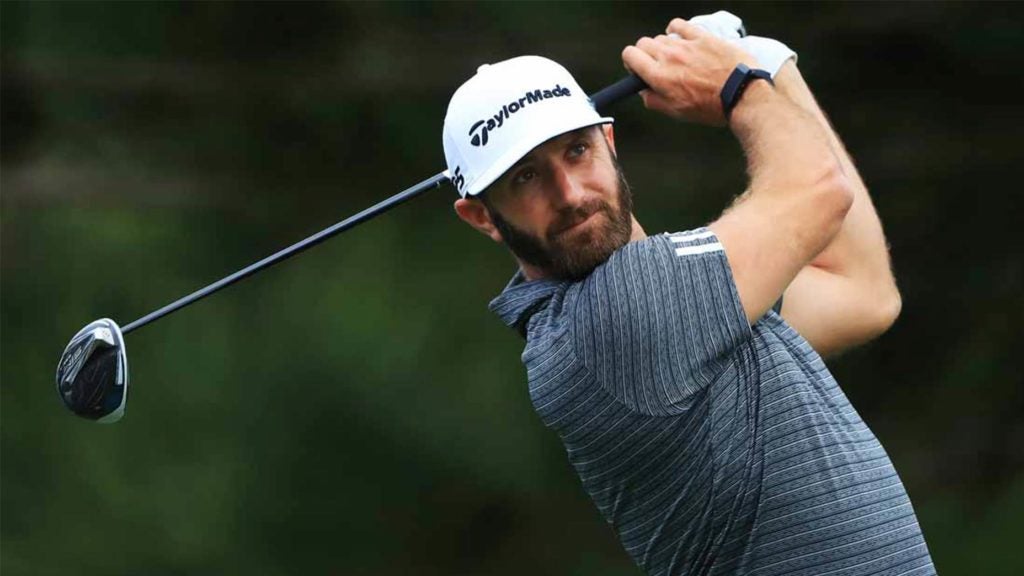Dustin Johnson sauntered his way to his 21st PGA TOUR win with a virtuoso weekend performance at The Travelers Championship in Cromwell, CT.
With the win, he joined an elite fraternity of players to have 13 wins in their first 13 seasons on TOUR, one that includes legends Arnold Palmer, Jack Nicklaus, Tiger Woods and now, Dustin Johnson. Elite company, indeed.
There is little doubt that DJ is one of the most athletic golfers in the game. His swing is his own (so much his own, in fact, that I would not recommend the average golfer try and emulate Dustin’s action); he possesses incredible speed and power, yet he can very easily gear down to flight shots with touch and impeccable distance control.
DJ also has an enviably simple approach and an uncluttered mind. I have heard him say there is no reason to get mad after a bad shot because it doesn’t really help. He has also authored this gem about his decision to change from a draw to a fade, and I quote: “I said, ‘I’m going to hit a fade,’ and I started hitting a fade.”
I love it…I just wish altering your ball-flight was that easy.
If you want to develop a strong fade like Johnson, you need to understand the dynamics of the shot and how it is created.
What is a ‘fade’?
Basically, a fade occurs when the clubface is open to the swing path through impact. In other words, for right-handers, the face is looking to the right of the swing-path when contact with the golf ball is made. Another way of looking at the relationship is the Swing-Path moves to the left of where the clubface is pointing.
This is a universal truth and cannot be disputed. Respect this principle and you will make immediate adjustments to the pattern of your golf shot.
The key to powering up the Fade is to ensure that your clubface is only open to its swing path and not open to the Target Line also. If the face was open to both the path and the target-line the ball would start weakly to the right and then curve further, otherwise knows as a slice.
It is well-documented that Dustin Johnson carries a significantly bowed (flexed) wrist at the top of his backswing. In his case this presents a closed clubface, and if that situation is presented to the swing-path through impact he will hit hooks and pulls. On the contrary he uses his athleticism to make this closed face play open to the swing-path in order to hit that powerful, left-starting fade-shot.
At impact, DJ uses the following mechanisms to make the closed face point to the right of the path:
- The Handle of the club is always slightly raised and in front of the handle, or the clubhead never overtakes the handle through impact.
- The lead hand is somewhat pronated (palm pointing to the ground).
- The right (trail) elbow is bent, and very importantly .
- The core and the hips are rotated and pointing toward the target.
But remember, Face and Path make curvature and the fade starts left because the face looks to the left of the target-line. Johnson uses the following downswing mechanisms to swing to the left of the face:
- Ball position errs forward and never back in the stance,
- The upper body continually rotates toward the target (including his head and his eye-line),
- The head remains behind the ball, and
- The arm structure is retained to allow the clubface to approach the “outside quadrant of the golf ball”.
Now a word to the wise, you aren’t Dustin Johnson and you cannot swing like him.
What you can do however, is garner a compete understanding of how the fade shot is created, and find your own formula. Consider your clubface situation and what you have to do to get it to be appropriately directed along a productive path for the intended shot, and you will launch your own power cuts.
YOU GOT THIS!
